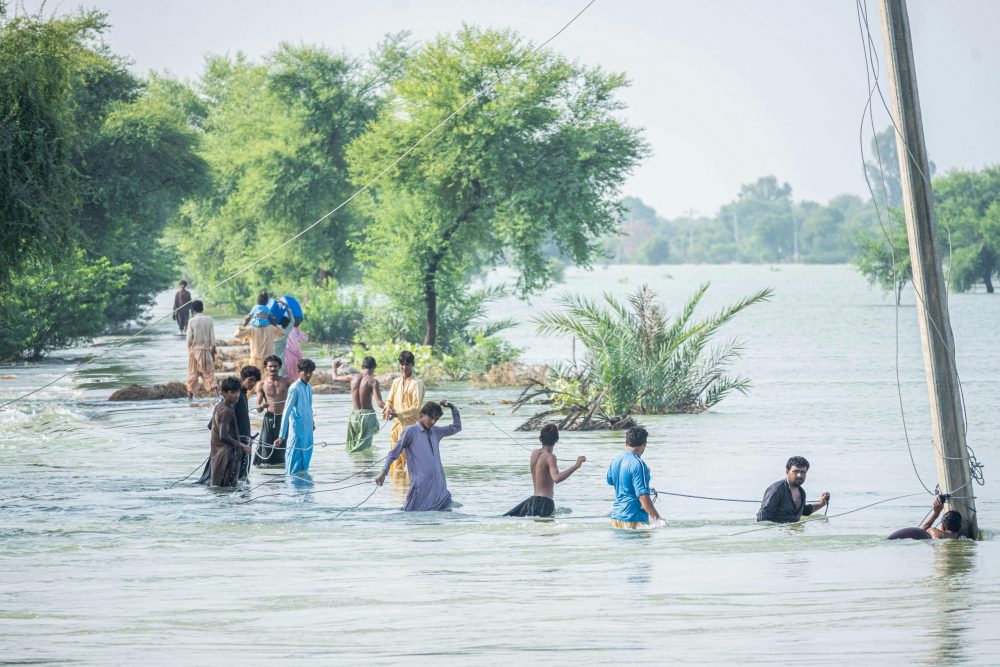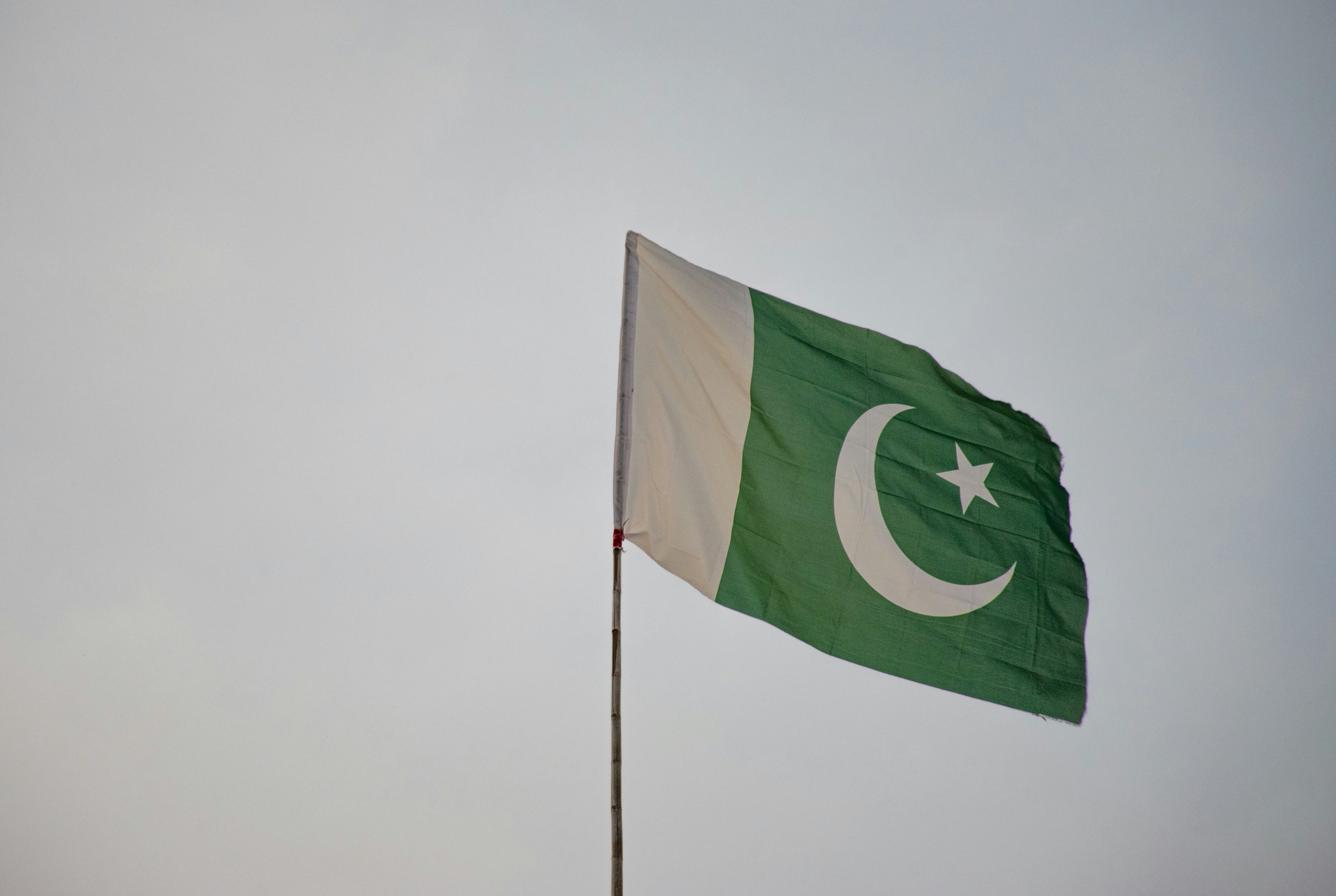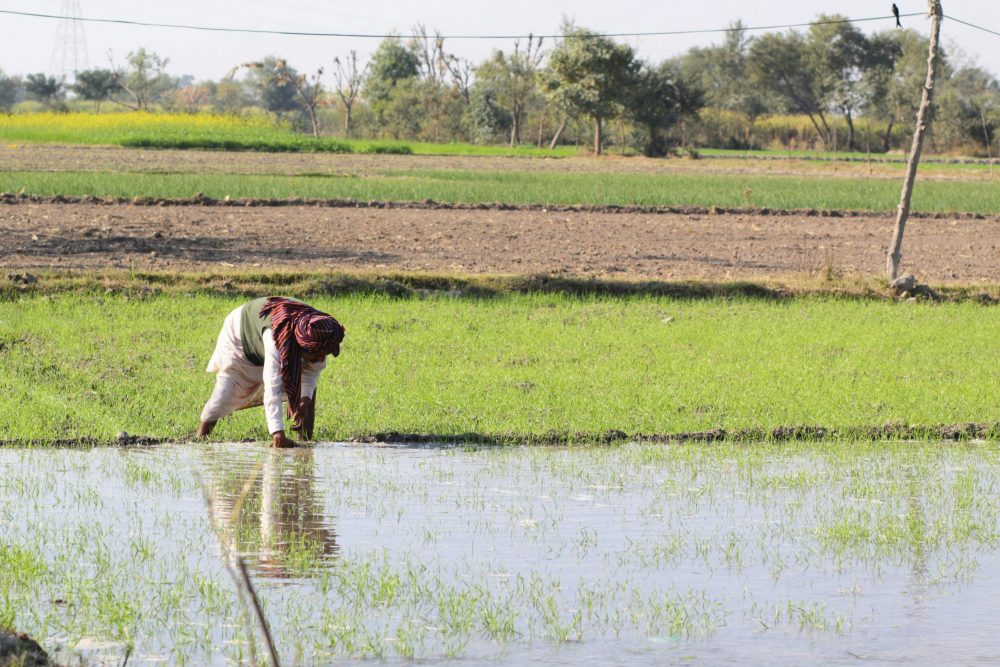The whole world is racing towards progress and development, but many of us fail to consider whether that progress is sustainable, environment-friendly or beneficial for our upcoming generations. In the 21st century, the greatest threat we face is not war or poverty, but a silent heat rise that’s reshaping the lives of not only the poor but also the wealthy and rich. Climate change is not a distant threat, but it’s an existential threat that is already affecting us all in unprecedented ways. According to the United Nations, the Earth has warmed by 1.34°C to 1.41°C since the pre-industrial period (1850-1900). The warmest year on record was 2024. (United Nations, 2025) Pakistan is among the topmost countries most vulnerable to the consequences of climate change, even though it only contributes 0.9% of global greenhouse gas emissions. (Government of Pakistan, 2021) In 2022, nearly 33 million people were affected by devastating floods in Pakistan. There were reportedly close to 8 million displaced people. Almost one-third of the nation was submerged. (Finance Division Government of Pakistan, 2023)
Pakistan’s Energy Landscape:
Pakistan, as a developing nation, requires energy in almost every sector. In recent years, energy demand has increased dramatically due to the expansion of infrastructure, industries, and other sectors. Almost every human activity requires energy and Pakistan’s population has also grown significantly.
For decades, the country has struggled with an energy crisis. In recent years, however, the government has largely managed to alleviate this crisis. But unfortunately, most of Pakistan’s electricity is generated from non-renewable energy sources. According to the Pakistan Economic Survey 2024-2025, Pakistan’s total installed capacity for generating electricity was 46,605 MW in the July-March Fiscal Year 2025, which represents a 1.6 percent increase over the 45,888 MW reported in the corresponding period of Fiscal Year 2024. Thermal, hydel, renewable, and nuclear energy make up 55.7 percent, 24.4 percent, 12.2 percent, and 7.8 percent of the total, respectively, as illustrated in figure 1 (Finance Division Government of Pakistan, 2025). Additionally, figure 2 illustrates that in the July–March Fiscal Year 2025 period, the proportions of thermal, hydroelectric, nuclear, and renewable energy sources in the electricity generation to the total power output of 90,145 GWh are 46.3 percent, 30.4 percent, 19.1 percent, and 4.2 percent, respectively (Finance Division Government of Pakistan, 2025). This makes it very evident that a significant amount of our electricity is still produced from non-renewable energy sources. Just 4.2% of our electricity comes from renewable sources like solar and wind. The greenhouse gas emissions from these non-renewable energy sources are ultimately the main cause of climate change.

Figure 1: Installed Capacity of Electricity July-March FY 2025 (Source: Pakistan Economic Survey 2024-2025)

Figure 2: Generation of Electricity July-March FY 2025 (Source: Pakistan Economic Survey 2024-2025)
Barriers to Renewable Energy Transition:
First, the financial crisis is the major issue. As a developing country, we lack the financial resources to make this significant shift. We need to borrow from the IMF, the World Bank and other developed countries. Second, capacity building is another major issue. Finance Minister, Mr. Muhammad Aurangzeb on World’s Glacier Day highlighted that although $10 billion had been pledged to Pakistan following the floods in 2022, only one-third of that amount had been received because we were unable to develop bankable, investable projects, and that is what we need to address (Dawn.com, 2025). Third, consumers are responsible for paying for the substantial energy losses that occur throughout distribution and transmission from grid stations to their homes, factories, etc. It takes a lot of time and investment to upgrade the current infrastructure. Fourth, Pakistan’s policies are inconsistent. Every administration seeks to enforce its own laws. Additionally, insufficient enforcement, a lack of long-term planning, and frequent
tariff changes discourage investors and have an impact on consumers. Fifth is public awareness. The benefits of renewable energy are still not well understood by businesses and citizens. And last but not least is the cost of electricity. The high cost of energy in Pakistan is making it difficult for customers to pay their bills. Pakistan’s poverty rate is already very high. The average person cannot afford it, and the fact that we produce power using fossil fuels is one of the main causes of its high cost.
Charting the Path to a Cleaner Energy Future:
The government must support the solar panel industry with more subsidies and incentives. In addition, public awareness campaigns are required to educate the general public about the benefits of clean energy. Also, the government should issue green recognition certificates to businesses, organizations, factories, and educational institutions that convert their entire electrical system to solar power, as these certificates will help them obtain loans and other benefits. This will really benefit the government. First, there won’t be much for the government to do to produce electricity. Second, there will be a solution to the energy crisis that some regions of the nation face, particularly during the summer. Furthermore, the government does not have to install transmission lines in Pakistan’s outdated and backward regions. Additionally, electricity prices will naturally drop. It will also assist us in achieving Sustainable Development Goal 7, Affordable and Clean Energy (United Nations Department of Economic and Social Affairs, 2025). Furthermore, the government must begin capacity-building training programs for government officials involved in energy-related initiatives. Finally, to draw in investors and help consumers, the government must implement long-term policies.
Conclusion:
Pakistan is at a pivotal juncture. Although greenhouse gas emissions from non-renewable energy sources pose significant challenges, they also present us with incredible opportunities. Pakistan has the potential to lead a green energy revolution in South Asia thanks to its youthful population and abundance of renewable resources, including its geographic location, sunny days, and wind corridor in Sindh. We have a lot of solutions; all we need is political will and public commitment. To make Pakistan’s green energy transition effective in addressing climate change, long-term and well-designed policies are also essential.
References:
- United Nations. (2025). Climate Action Fast Facts. https://www.un.org/en/climatechange/science/key-findings
- Government of Pakistan. (2021). Updated Nationally Determined Contributions 2021. https://unfccc.int/sites/default/files/NDC/2022-06/Pakistan%20Updated%20NDC%2020 21.pdf
- Finance Division, Government of Pakistan. (2023). Pakistan Economic Survey 2022-2023 Annexure III – PAKISTAN FLOODS 2022 IMPACT ASSESSMENT. https://www.finance.gov.pk/survey/chapters_23/Annex_III_Pakistan_Floods_2022.pdf
- Finance Division, Government of Pakistan. (2025). Pakistan Economic Survey 2024-2025. https://www.finance.gov.pk/survey/chapter_25/14_Energy.pdf
- Dawn.com. (2025, March 21). Climate change has already hit livelihood of millions in Pakistan: finance minister. DAWN.COM. https://www.dawn.com/news/1899377
- United Nations Department of Economic and Social Affairs. (2025). Goal 7 Department of Economic and Social Affairs. Sustainable Development. https://sdgs.un.org/goals/goal7#overview
About the Author: Saad Hamed is currently pursuing two degrees simultaneously: an MPhil in Environmental Science at Quaid-i-Azam University, Islamabad, and a B.A. LL.B. (Law) at Sialkot Law College, Sialkot. He also holds a BS degree in Chemistry. He has participated in
several national and international competitions, including the MIT Energy Hack 2022, where he received two awards: the Overall Best Data Visualization Award and an Honourable Mention in the McKinsey Sustainability category. He is very passionate about climate change and actively advocates for environmental issues at various forums.




